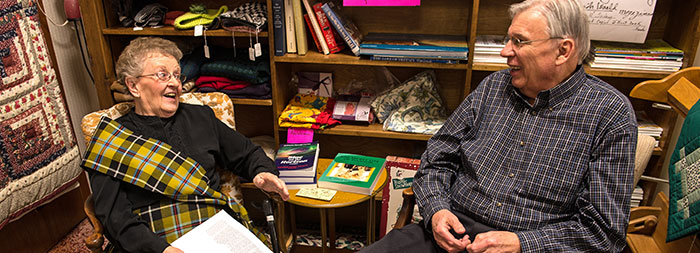In the O’Shaughnessy Chronicles, descendants of southwest Wisconsin’s hard rock-mining, nineteenth century Cornish immigrants weather early twentieth century change.
“‘Have you ever eaten Cornish tea biscuits, Earl?’
‘Can’t say that I have.’
Will hoisted the jar toward his neighbor. ‘Try one. There’s nothing better with a good brew.’” – Bittersweet Harvest
Nearly two centuries after the first immigrants from Cornwall, England arrived in Iowa County, Wisconsin, local interest in Cornish food, architecture and culture is resurging.
A Southwest Wisconsin Cornish Society was founded in 1991. The society has sponsored an annual Cornish Festival every September since 1993.
It took a nearly a century, however, to recapture appreciation for the area’s Cornish heritage.
As direct ancestral ties between Iowa County and Cornwall became increasingly diluted in the 20th Century, maintaining that interest became an uphill battle, says Catherine Whitford, a lifelong area resident who has helped lead the effort to turn that around.
In 2012, Whitford was named a Cornish Bard by the Gorsedh of Cornwall, in a ceremony at Camelford, Cornwall. Bards are storytellers, poets, and singers who are tasked with keeping Cornish culture alive around the world. Whitford has traveled numerous times to Cornwall, and still has extended family there. “It’s just so important to tell people why we settled here in Iowa County, and who we are,” Whitford said.
Whitford is also the owner of the Mineral Point Collection, an “incubator for small and original shops,” at 151 High Street in Mineral Point. One of the shops, The Cornish Corner, sells jewelry, tea, candy, music, books, scarves and many other unique items brought direct from Cornwall.
So who were the first Cornish immigrants to arrive in Iowa County?
They were mostly miners by trade who began arriving from Cornwall in the 1820s. The influx continued in the 1830s and 1840s, spurred by the growing mining industry in Iowa County, the decline of mining in Cornwall and the potato famine of the 1840s that brought mass hunger to their home country.
The Cornish government relocated some of its residents to Iowa County as a way to keep them from starving. One entire Cornish village was relocated what became the rural hamlet of Linden, Wisconsin.
By the mid-1800s, tiny Linden, northwest of Mineral Point, had the largest Cornish settlement in the state of Wisconsin. Linden was also a regional mining center. Linden United Methodist Church, designed by a Cornish architect and built in 1851 out of locally mined rock, still stands. It was added to the National Register of Historic Places in 1978.
Today, about one-fifth of the residents of Linden, current population 550, still claim Cornish heritage.
A similar percentage of Mineral Point residents also, today, have Cornish ancestral ties. And the mid-19th Century architecture of downtown Mineral Point bears a striking resemblance to similar-era buildings in Cornwall. Immigrants from Cornwall who built downtown Mineral Point “built what they knew,” Whitford said.
Iowa County continued to be a mining center until early in the 20th Century. By then, Cornish immigration to the area had long since peaked. And as the 20th Century progressed, local interest in Cornish culture began to die away. “The best explanation was the people, at the time, just wanted to be American,” Whitford said.
The first efforts to resurrect Cornish architecture came in the 1930s, with the restoration of Pendarvis, a group of 19th Century homes in Mineral Point. Today, Pendarvis is owned by the Wisconsin Historical Society, with activities and events for visitors that place special emphasis on Cornish culture.
The Walker House, an 1830s hotel in Mineral Point, has also recently been restored. Shake Rag Alley, also a restored Mineral Point site, has been home since 2004 to a flourishing arts center.
Renewed interest in Cornish culture and food has followed. In 2013, Cornish language classes were added for the first time to the schedule of events at the annual Cornish Festival.

Cornish fare at The Red Rooster Cafe in Mineral Point includes tea biscuits, figgyhobbin, bread pudding and pasties
Tea biscuits, figgyhobbin and pasties top the list of Cornish food that can now be enjoyed at local restaurants such as the Red Rooster Café in downtown Mineral Point.
To learn to how to make pasties using the Red Rooster Café’s recipe, subscribe to author Harold William Thorpe’s free monthly e-newsletter. The April 2014 e-newsletter includes a pasty recipe and pasty-making photos graciously shared by the Red Rooster Café. Archived copies of past e-newsletter are available to subscribers.
How does your family keep its Cornish heritage alive?
Share your family’s Cornish traditions and/or recipes for pasties, tea biscuits, figgyhobbin, and other Cornish fare! Use our sharing form to submit your contribution, your traditions and recipes may be featured in a future edition of the Harold William Thorpe e-newsletter.
In the O’Shaughnessy Chronicles novels, descendants of southwest Wisconsin’s hard rock-mining, nineteenth century Cornish immigrants weather early twentieth century change. These award-winning books are available through Amazon, the publisher Little Creek Press, and many local bookstores. You can also download a sample chapters from this website today.
All images ©2014 Terry McNeill
To see more of Terry McNeill’s photographic work, follow him on Capture Wisconsin.












